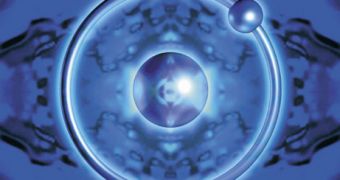A team of scientists successfully performed what can be called "molecular surgery." What they did was snip off a single hydrogen atom from a molecule and then added it back on again. This is the first time a single chemical bond between two atoms has been broken and reforged.
Moreover, the scientists claim to be able to repeat the process, and its reverse action, in a controlled manner, using a scanning tunneling microscope (STM).
This was used as a cutting tool, a nanoscale scalpel, which is actually a very sharp metal tip held close to an object. The microscope is a non-optical type, that scans an electrical probe over a surface to be imaged to detect a weak electric current flowing between the tip and the surface.
Using this tool, the team was able to obtain images of conductive surfaces at an atomic scale of 0.2 nanometers, and is the only way to manipulate individual atoms, trigger chemical reactions, or to reversibly produce ions by removing or adding individual electrons from atoms or molecules.
Yousoo Kim and colleagues at the Surface Chemistry Laboratory in Wako, Japan, performed the experiment, where they first located a methylaminocarbyne (CNHCH3) molecule that was fixed to a platinum surface, and then they applied a voltage, which increase the electron flow.
The result was the breaking of one bond, between the nitrogen and the hydrogen atom of the molecules, but the other ones were left untouched, thus producing a molecule of methylisocyanide (CNCH3).
Kim said that reversing the process is simply a matter of submerging the molecule in a hydrogen bath, where a platinum catalyst splits the hydrogen molecules and frees individual hydrogen atoms, which then recombine with the methylisocyanide to form methylaminocarbyne again.
The scientist say there many be potential applications of this technique in molecular electronics, like a molecular switch, that could change a substance from being an electrical conductor to an insulator.

 14 DAY TRIAL //
14 DAY TRIAL //